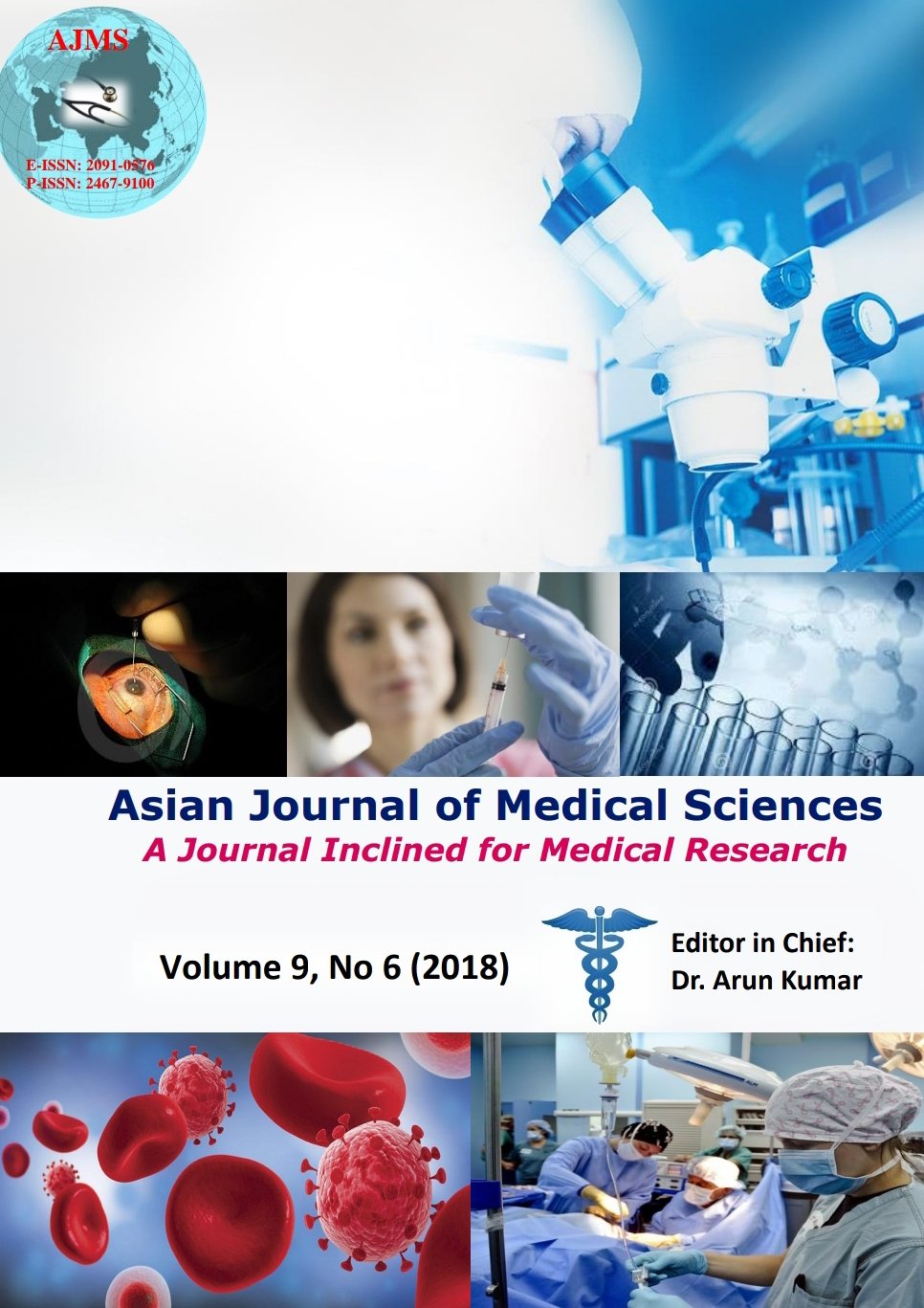The relationship between the thyroid gland and body at different gestational age of developing human foetuses
Keywords:
Human foetuses, Thyroid gland, Location, Dimensions, DevelopmentAbstract
Background: Thyroid gland is one of the organs of interest for researchers since a long time. Though, detailed study about adult thyroid gland is there in the literature but thyroid gland at different stages in the foetal period is far less available.
Aims and Objective: To find out the morphological and morphometric features on the development of foetal thyroid gland in relation with different gestational weeks.
Materials and Methods: The study was carried in the Department of Anatomy, Manipal College of Medical Sciences, Pokhara, Nepal, on 40 human foetuses of known gestational age. The midline dissection of the neck was done to expose the thyroid gland. The shape and measurements like length, breadth and thickness of both lobe of the gland were noted.
Results: The mean values of all parameters by gestational age were calculated. In the present study, the weight of foetuses showed gradual increase from 10th week to 38th weeks of gestation. In the normally developing foetuses the thyroid gland dimension and its weight also increases with increase gestational age.
Conclusion: There was no more difference between the dimension of right and left lobe of thyroid gland. The study provides morphological and morphometric knowledge on the development of foetal thyroid gland from 10th week to 38th weeks of gestation. The knowledge of thyroid gland weight and dimension and body weight in relation to the gestational age might be helpful to judge the thyroid structure in preterm babies.
Asian Journal of Medical Sciences Vol.9(6) 2018 40-44
Downloads
Downloads
Published
How to Cite
Issue
Section
License
Authors who publish with this journal agree to the following terms:
- The journal holds copyright and publishes the work under a Creative Commons CC-BY-NC license that permits use, distribution and reprduction in any medium, provided the original work is properly cited and is not used for commercial purposes. The journal should be recognised as the original publisher of this work.
- Authors are able to enter into separate, additional contractual arrangements for the non-exclusive distribution of the journal's published version of the work (e.g., post it to an institutional repository or publish it in a book), with an acknowledgement of its initial publication in this journal.
- Authors are permitted and encouraged to post their work online (e.g., in institutional repositories or on their website) prior to and during the submission process, as it can lead to productive exchanges, as well as earlier and greater citation of published work (See The Effect of Open Access).




